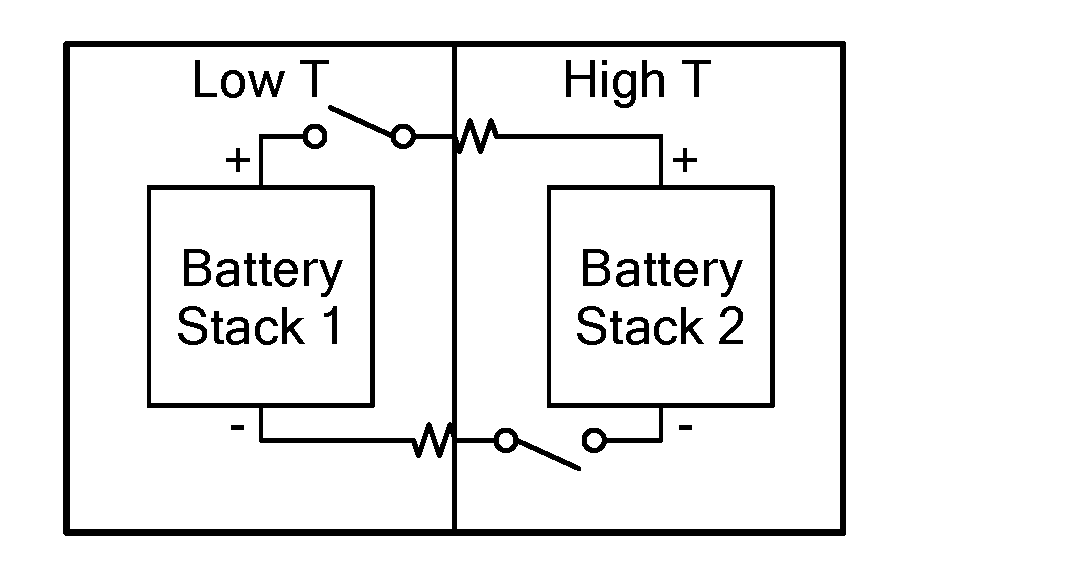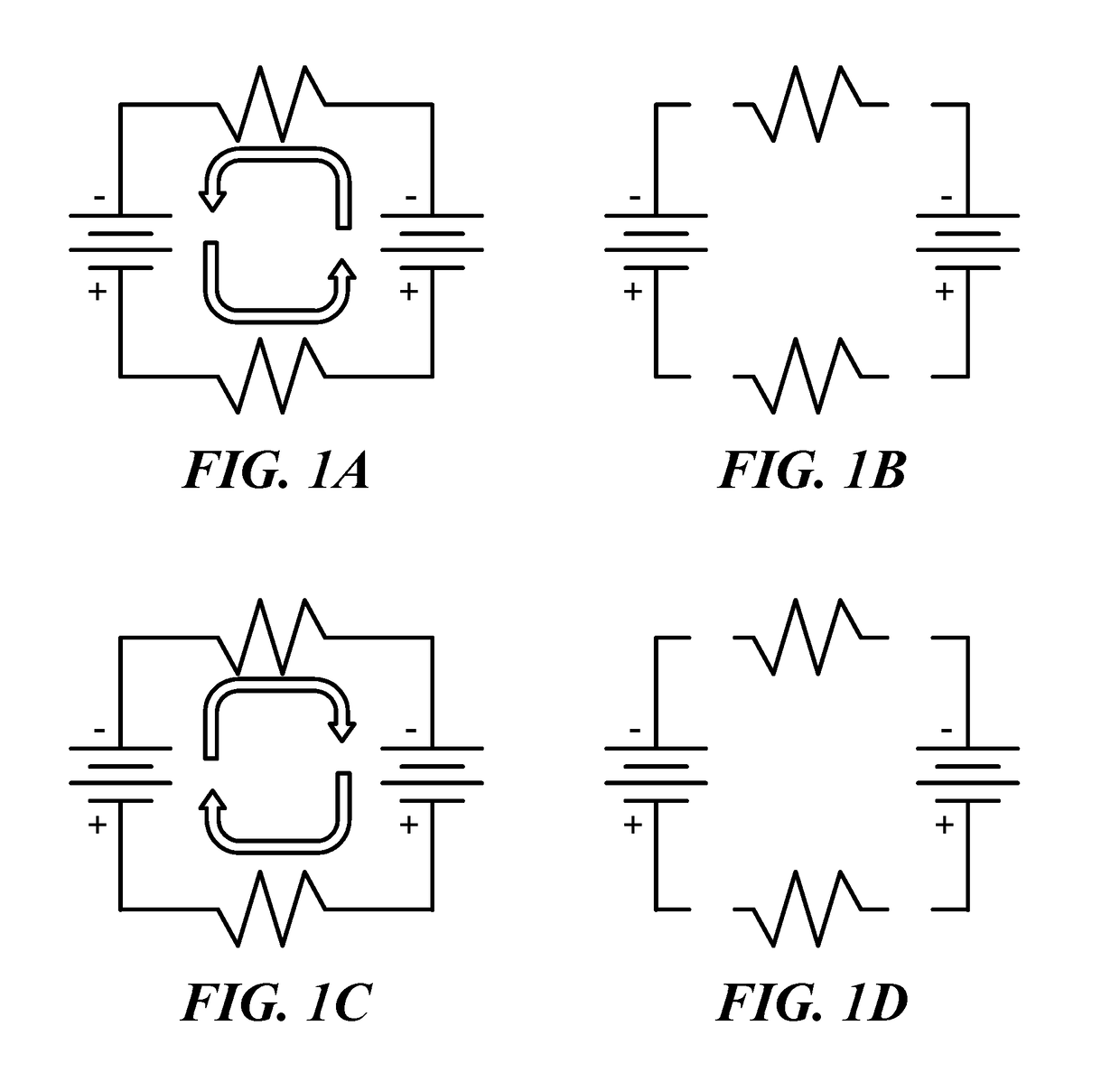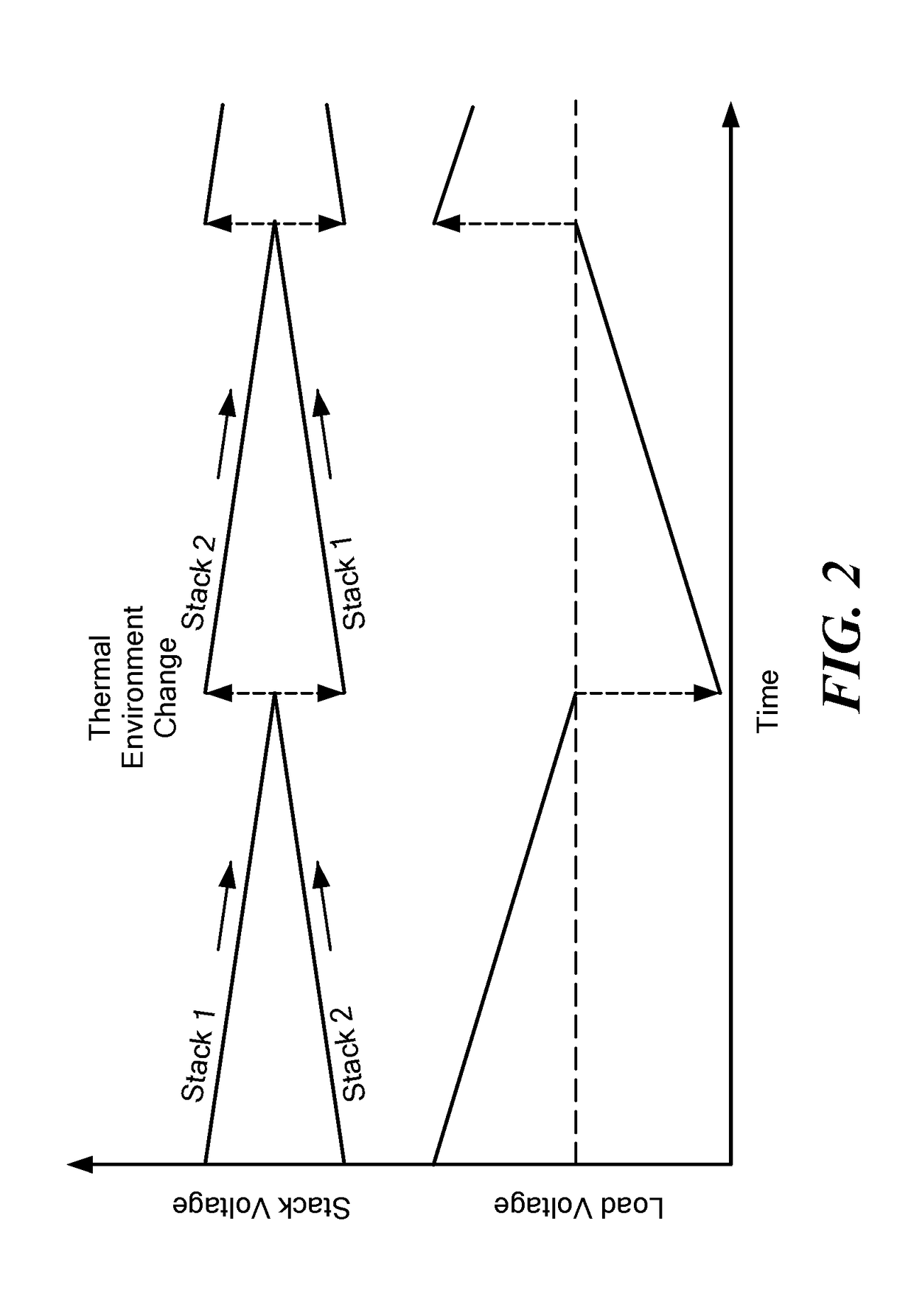Electrochemical Stack Direct Heat To Electricity Generator
a technology of electricity generator and electric stack, applied in the field of electrochemical systems, can solve the problems of difficult to find the place where sensors and desired data types can be located, and the system capabilities are often compromised
- Summary
- Abstract
- Description
- Claims
- Application Information
AI Technical Summary
Benefits of technology
Problems solved by technology
Method used
Image
Examples
example 1
LiCoO2 (LCO) Dual Cell
[0024]Resistance values for the electrical load can be chosen to match the desired power output per period. In a first experimental example with a LiCoO2 (LCO) Dual Cell system, load resistances of 100 Ω and 1000 Ω were chosen to determine the trend of power and resistance for the circuit. The battery sources were placed in 10° C. and 40° C. thermal environments, and the cells were swapped in open circuit configuration. Ten minutes were allowed after switching the cells to allow thermal equilibrium.
[0025]Current value was determined using Ohm's law and direct measurement of the drop in potential across the load resistor. FIG. 4A shows a graph of adjusted potential (V) for two thermal cycles in a 2 cell LCO circuit with 100 Ω load resistor, and FIG. 4B shows the same thing for a 2 cell LCO circuit with 1000 Ω load resistor. The orange values at the top of those graphs correspond to positive terminals, and the purple values correspond to the negative terminals. A...
example 2
LiV2O5 (LVO) Dual Cell
[0028]A second experimental example used a LiV2O5 (LVO) Dual Cell system where The cells were LixV2O5 / Li—Al (LVO) commercial cells (Panasonic VL2020). Like the LCO system, resistance values for the circuit can be chosen to match the desired power output per period. Resistances of 100 Ω and 1000 Ω were chosen to determine the trend of power and resistance for the circuit. Cells were placed in 10° C. and 40° C. temperature thermal environments, and the cells were swapped in open circuit configuration. Ten minutes were allowed after switching the cells to allow thermal equilibrium.
[0029]FIG. 5A shows a graph of adjusted potential (V) over time where the red numbers correspond to estimation of the state of charge when comparing OCV values to GITT measurements of the cell, and black numbers correspond to calculated changes to the state of charge from the calculated current changes. These number correspond well, indicating the change in voltage represents a change in...
example 3
Single Temperature Charge-Free System
[0032]A third experimental example used a single common thermal environment for both battery sources. The single temperature system, unlike the dual temperature system, cannot use two of any cell. Instead, the cells need to be of equal open circuit voltage, while the cell should possess different temperature coefficients. The larger the difference in the temperature coefficients, the better, and ideally they would have different signs. If the cells begin at an average temperature at the same voltage, then closing the circuit would result in no current. Increasing the temperature of the cells creates a net potential. If the circuit is closed, then a current can be observed. Cooling the cells to a cold temperature then creates a new potential. Closing the circuit then drives current in the other direction. Both of these actions are spontaneous (i.e. do not require external charging).
[0033]A 7-cell system was constructed by wiring stacks of homemade...
PUM
| Property | Measurement | Unit |
|---|---|---|
| temperature | aaaaa | aaaaa |
| electrical potential | aaaaa | aaaaa |
| temperatures | aaaaa | aaaaa |
Abstract
Description
Claims
Application Information
 Login to View More
Login to View More - R&D
- Intellectual Property
- Life Sciences
- Materials
- Tech Scout
- Unparalleled Data Quality
- Higher Quality Content
- 60% Fewer Hallucinations
Browse by: Latest US Patents, China's latest patents, Technical Efficacy Thesaurus, Application Domain, Technology Topic, Popular Technical Reports.
© 2025 PatSnap. All rights reserved.Legal|Privacy policy|Modern Slavery Act Transparency Statement|Sitemap|About US| Contact US: help@patsnap.com



